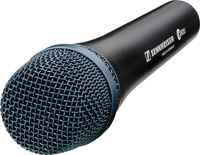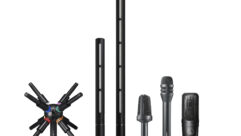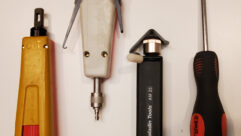

Handheld Mics Roundup
Jan 7, 2010 2:47 PM,
By George Petersen
Sound and performance specs for today’s live vocal mics.
Every day, thousands of performers around the world are getting ready to give their best. Pro musicians spend countless amounts of money and time selecting the right combinations of new and vintage guitars, amps, drums, horns, and keyboards that complement their performance. Yet for some reason, the selection of vocal mics is too frequently left to chance—whatever’s available at the venue is handed to the singer just before hitting the stage.
With the important part vocals play in most music shows, it’s sad (and somehow ironic) that after all the rehearsals, preproduction, and preparation, the lead vocal mic—the single element that the entire production hinges on—often costs less than a top-end bass drum pedal, a couple stomp boxes, or even the road case used to transport the power amplifiers.
The availability of quality handheld mics is hardly an issue. In surveying top-of-the-line offerings from various manufacturers, we encountered a dazzling array of models to choose from, with most carrying MSRPs in the $200-to-$700 range and another dozen priced even more.
The variety’s there, and the good news is that the sound and performance specs of today’s handheld mics are better than ever. Unlike rare guitars or classic tube gear, this is one area in audio where new products easily outperform vintage models. At the same time, new handheld mics are coming ever closer to providing full-on studio performance in a rugged, compact package. Sennheiser’s e e 965 and the ShureKSM9 feature switchable cardioid/supercardioid response; Audio-Technica incorporates capsules from its AT4050 and 4033 studio mics into some of its Artist Elite models; and an increasing number of companies typically associated with studio mics—such as Neumann, Schoeps, Milab Microphones AB, RØDE Microphones, Blue Microphones, Pearl, Violet Design, and Telefunken Elektroakustik—include handheld mics in their current lines.
Beyond audio specs and sound, other issues are important. A tight polar response pattern may be great for reducing bleed from onstage high-SPL sources (drums, amps, wedges, etc.), but the mic may not fit the performer’s style. A vocalist that moves around a lot while singing is probably better suited to a cardioid or wide cardioid pattern, and in such cases, the mic’s off-axis response may also be key in the selection process. Speaking of patterns, a mic’s rear lobe response can be critical in the placement of wedge monitors. Hypercardioids are better suited to wedges slightly off to the side; for monitors in line with the mic’s rear, cardioids are preferred.
With a huge available selection of great sounding mics (dynamics, condensers, and ribbons) at nearly every price range in the accompanying chart, this is a great time to check out something new, while helping educate customers you work with on the affordable pleasures of a truly great vocal mic. After all, isn’t their performance worth a little extra? Here’s a roundup of the latest handheld mics.










